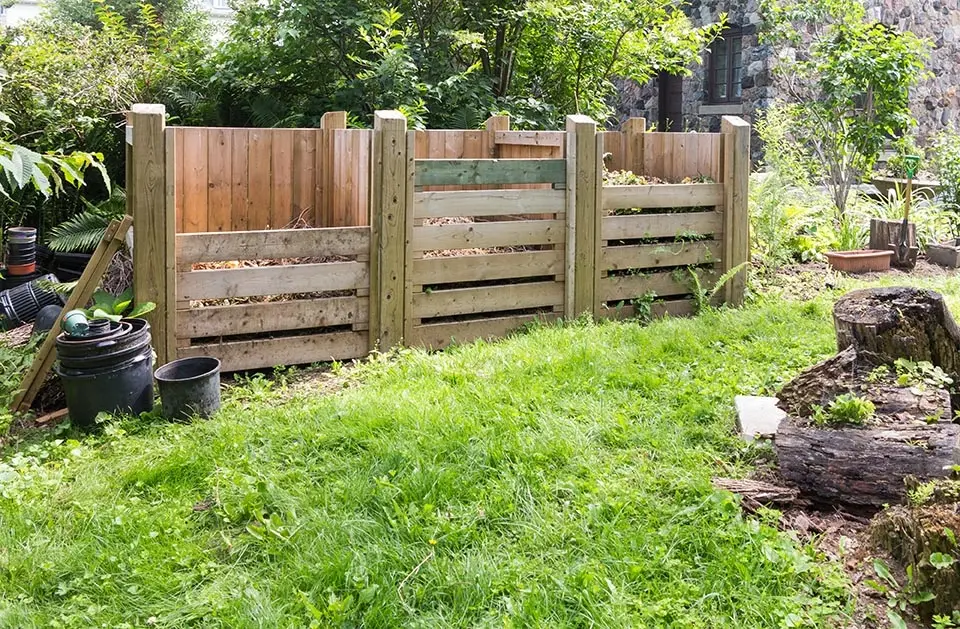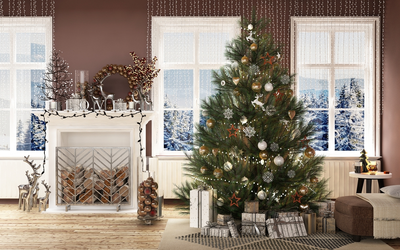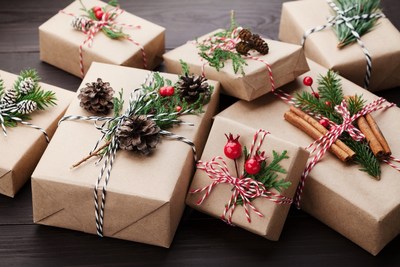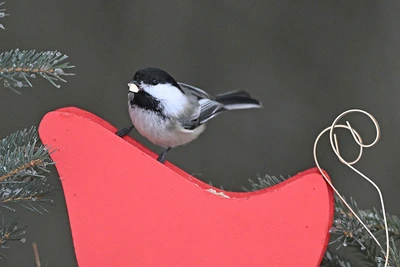
Composting Tips & Tricks
It’s no wonder that so many gardeners refer to compost as “Black Gold” or “Gardeners Gold”.
Compost is a natural organic fertilizer made by decomposed vegetable waste. You can reduce household waste and then use the compost to improve the quality of soil in your garden.
Making compost doesn’t need to be hard work, can cost very little, and the only secret ingredient you need is patience.
Finally, relax! Even if you do everything wrong, you will still make decent compost. Eventually! Buckerfield’s knowledgeable staff can help you select the right composter and help you with any questions you have.
Benefits of Composting:
Organic household waste is recycled, cuts down garbage in our landfills, is environmentally friendly and the organic materials are returned to the soil to nourish your garden.
By composting you will be rewarded by knowing that reducing, reusing and recycling your waste, you are helping to conserve our environment. Studies have shown that one-third of household wastes can be recycled and turned into nutrient rich compost.
Compost is a great fertilizer for your plants and can be dug into the soil prior to planting your garden to add nutrients to the soil. Compost will provide nutrients like nitrogen, potassium, phosphorus, and trace elements to your plants making them healthier.
Compost can also be used as mulch in your garden beds and throughout your yard. Spread over new or existing grass, use when transplanting new plants, transplant your houseplants. Your plants will be stronger and less prone to disease. Adding compost is a good way to improve soil structure, water retention and aeration. Compost helps to suppress weeds, and protects soil from the damaging effects of wind and heavy rain. It also adds important micronutrients and increases the bacterial activity in the soil.
Choose a Compost Bin:
Plastic compost bins are better for beginner composters, while homemade bins are more suited to the avid gardener and those who have a larger volume of materials.
When selecting a compost container consider:
-
Available space (room for a multi bin system, large heap or compact bin)
-
Appearance of composter (blends in or an eyesore)
-
Organic materials available (yard waste, kitchen scrapes, laves manure)
-
Local predators including tars, mice, squirrels, racoons and bears
-
Cost (homemade or store bought)
-
Type of local weather (hot, cold, wet climate)
Plastic Bins:
-
Locking lid keeps out pest and local wildlife
-
Inexpensive, smaller and readily available
-
Use a compost aeration tool to turn compost as it is challenging to turn compost with a fork or shovel through the top opening
-
Lack air circulation due to solid plastic sides and top
-
Removing finished compost from the bottom opening can be awkward
-
Plastic bins can be too narrow to enable compost to fully heat up. High temperatures are needed to kill pathogens and weed seeds
-
Make sure bin is large and has lots or air holes to speed composting
Homemade Compost Bins:
These are most often made from wood or a combination of wood and wire mesh.
-
Have better air circulation
-
Hold a larger amount of material
-
Easy to turn composted material, add new material and remove finished compost
-
Pacing two or three bins side by side allows material to be moved bin to bin as it nears completion of the composting cycle
-
Can be challenging to keep rodents and other animals out of bin
Compost Tumbler:
A compost tumbler requires less effort to get the composted finished product in a reasonable amount of time. An efficient alternative to the standard stationary compost bin, tumblers are designed for convenience and ease-of-use.
-
Aerating and turning the compost is much quicker and less strenuous
-
Shorter time to finish compost than most models when kept at hot-pile temperatures
-
Holding capacity is smaller than open bins and can get quite heavy when full
-
Because of the advanced design, tumblers often cost more than the average composter
Select a Location for Your Compost Bin:
-
Choose a site that is level and well drained and easily accessible year round. Remove any grass or plants and turn soil 6-8 inches before placing bin.
-
To ensure worms and other beneficial organisms can make their way into the pile place on bare soil.
-
Keep your compost in a location easy to reach. Remember if your compost pile is too inaccessible you may be less likely to use it for kitchen waste. Ideally the pile should be placed conveniently near both the source and the final destination of the composted material.
-
If concerned about the appearance of your bin you can put up a trellis and plant colorful spring and summer flowers.
Four basic ingredients to make compost are:
-
Carbon rich browns: dry woody materials.
-
Activators: Mix some low nitrogen, woody stuff in with lawn clippings and kitchen waste into your compost pile.
-
Water: The right amount of moisture is important. If you take a handful from the center of your pile and you can squeeze just a few drops of moisture out of it, that’s perfect.
-
Air: Speeds up decomposition. If there is not enough air, decomposition becomes slower and produces ammonia and hydrogen sulfide, that don’t smell very nice. Turn compost piles regularly to introduce enough air.
What to Compost:
The perfect compost pile needs the right mixture of ingredients, plenty of water (but not too much), warmth and lots of air. It is important to get the right mixture of ingredients in your compost to ensure that it heats up nicely and breaks down effectively.
Adding too much brown material will result in a compost pile that takes a long time to break down. Adding too much green material will produce a compost pile that doesn’t breakdown well and will smell. A balanced diet for your pile is roughly three parts green to one part brown waste too make rich dark compost.
Green materials: are nitrogen-rich materials added to a compost pile.
-
Aged manure
-
Weeds, grass clippings, disease free garden plants and flowers, fruits, vegetable peelings, egg shells, tea bags and coffee grounds can go into your compost pile
Brown materials: are the carbon-rich materials added to a compost pile.
-
Shredded cardboard or newspaper, egg cartons, old greeting cards, empty toilet paper rolls
-
Sawdust and wood chips or shavings
-
Tree and shrub prunings
-
Leaves
-
Hay & straw
-
Pine needles
What Not to Compost:
-
Pet waste and used kitty litter
-
Sawdust from treated wood
-
Meat, fish, bones, fat, grease, cooking oils or dairy products as these could attract unwanted animals
-
Noxious weeds with seed heads, poison ivy or poison oak
-
Plants with blight, mold or other diseases
-
Plants with major insect infestation
-
Laminated cardboard or paper, very shiny magazines, juice or milk cartons
How to Speed Up Composting:
-
Keep composter in the sun for warmth
-
Adding fresh oxygen into your compost pile by turning it more frequently will help your compost break down faster. Many of the bacteria that break down your compost will start to die if they have used up the available air in the pile. Rotate or turn often.
-
Keep compost moist but not wet. If your pile is too wet try adding some dry brown materials like shredded leaves or hay.
-
Finely shredded materials like leaves, hay, straw, paper or cardboard, vegetable waste and pruning’s break down quicker. Shredding increases the surface area that the compost microbes have to work on and provides a more even distribution of air and moisture.
-
Layer your green and brown materials.
-
Add the secret ingredient! Adding an activator such as alfalfa meal to your compost provides the much needed nitrogen and protein needed to really speed up the process.
-
Adding new material to an existing pile will prolong the wait for finished compost. A better idea is to start a new compost so both composters will break down more efficiently and be ready sooner!
-
Add a scoop of garden soil or finished compost once a week
-
Add some earthworms
Making a Compost Tea:
-
Add four or five cups of compost to 5 gallons of water. Stir contents thoroughly and let sit.
-
Allow compost to steep for a minimum of thirty-six hours. The more time the compost has to dissolve, the more nutrients will be released.
-
Stir your tea mixture to increase the rate of nutrient release
-
Use to water indoor and outdoor plants
The Scoop about Poop:
Manure is a great addition to a compost pile. It contains nitrogen, phosphorus, potassium and many beneficial bacteria that your plants will thrive on. Yet not all poop is the same.
Its makeup and benefits in compost will vary depending on the food source of the animal. If taken from pets that are herbivores such as rabbits, gerbils, sheep, cows and chickens, it acts as an accelerant and will heat up a compost quickly.
-
It is best to use aged manure that is drier and less likely to have a strong odor.
-
Fresh manure can contain up to 80 percent water and affect your compost piles moisture level.
-
Fresh manure can also create intense bacterial activity that can raise the temperature of the compost too quickly and kill off earthworms and microbes. Allow manures to age before adding them.
Finished Compost:
Varied techniques and methods of composting lead to a rich compost. But how do you know when it is finished and ready to use?
-
Compost should no longer resemble food or yard waste but will become a dark and crumbly substance, similar to coffee grounds. Remnants of old food may be present but the majority of product should be light, fluffy and easily crush between your fingers.
-
Because different matter decompose at different times it might be necessary to screen large, pieces of waste such as beets, potatoes or corn husks that require longer to compost. Simply place handfuls of compost over a screening device and shake or rub your hand gently back and forth, letting the smaller pieces fall through and remove the larger pieces and return them to the compost pile.
-
As its appearance changes so does its odor. It no longer smells like a mixture of garbage but smells sweet and earthy.
-
Use fully decomposed compost in the spring as partially decomposed will compete with the new spring plantings for nitrogen. In the fall work partially decomposed compost into your garden as the remaining matter will easily finish decomposing before you are ready to begin spring planting.
-
It is fine to store unused compost until needed if you have extra at the end of the season. Keep in a covered container to prevent it from drying and use within six months. But never throw it out! You can never have too much compost!
How Earthworms Help:
-
Worms eat decaying vegetation and excrete organic compounds that enrich the mix, while their burrowing helps aerate the compost. As organic matter is passed through their digestive system, it is finely ground and neutralized by calcium carbonate that is secreted by the worm’s gizzard.
-
Worms have no teeth, eyes, ears, or nose. They receive all of their sensory input through vibration, heat, light and moisture levels.
Troubleshooting:
Not much happening in your compost pile?
-
It’s probably too dry or too low in nitrogen. The simple solution is to try watering the pile and see if it makes a difference. Add more nitrogen rich material like grass clippings, manure or kitchen waste.
-
Low temperatures could also be to blame. If a pile constructed in the fall does nothing over the winter, wait to see if the warmer summer solves the problem.
-
If the pile is dry and around the edges it probably has too much ventilation. If it’s dry on top it needs a lid.
-
There are commercial activators on the market as well. Try some rot it! The secret activator is alfalfa meal. The results are remarkable.
Yuck! My Compost Bin Smells:
A wet compost pile is easily one of the most common causes of compost that smells. If the pile stays too wet, the beneficial microbes that break down the pile can't do their job, and you get a decaying odor to the pile instead of a sweet smell.
To fix a wet pile, there are a couple of things you can do:
-
Turning the pile will aerate it, which will help it dry out and provide oxygen to those beneficial microbes to get them working again.
-
Add more browns like straw, dried leaves, or shredded newspaper. Mix it in well, and your pile should start smelling better.
-
If the problem is that it's been raining and your pile is sopping wet, give it a turn, add some browns, and cover it with a tarp to prevent more water from making your compost even soggier. Once it dries out some, you can take the tarp off.
Too Many Greens
Green materials in composting terms are nitrogen-rich materials such as grass clippings, vegetable and fruit scraps, and used coffee grounds. Because these materials naturally contain so much water, they can easily become matted down and make your compost pile a soggy, smelly mess.
-
To fix the issue of having too many greens, add some browns! Add shredded newspaper, straw, and pine needles to the pile. Mix it all together well.
Meats, Fats, and Dairy:
-
Keep non-plant matter out of your bin, both for odor and safety reasons.
-
Compost that has had meat and other spoiled foods in it can attract animals and harbor harmful bacteria, and you don't want any of that in your compost.
Flies in the Compost Pile:
-
Larvae of many flies feed on decaying organic matter and are a normal part of composting. Maggots are the offspring of the common housefly. These and other types of flies seem to really love a good compost pile so try covering or closing lid to minimize.
-
The flies you are most likely to notice are fruit flies which are attracted to the decaying fruit added to your compost. Try to bury the fruit under grass clippings.
My Compost Pile is Dry:
Compost that is too dry will petrify not compost so it is important that the contents of your bin are equally moist throughout.
-
Moisten layers of materials as you add them to your pile and make sure you add the proper mix of brown and greens. Browns are drier and will absorb more liquid then greens which are mostly water.
-
It may be necessary to aerate your pile for water retention as well as oxygen flow. Create some space within the pile for water to absorb into materials.
My Pets Are Attracted To My Compost Bin:
-
Be careful about what you are putting in your compost, never add meat or dairy.
-
Your compost bin shouldn’t smell like roses but it should not be attracting hungry or animals that want to dig.
-
Place a large rock on the lid if your bin is covered so in won’t be easily removed.
Have more questions? Visit your local Buckerfield's and we'll be happy to help!



